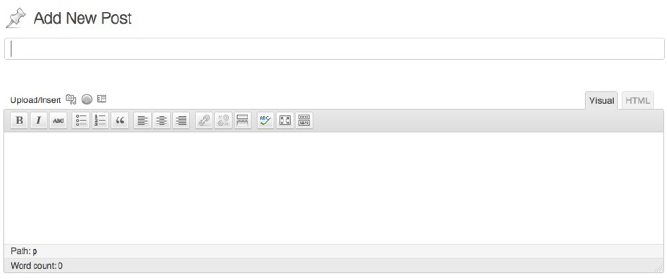Where Should Content Fit into your Web Redesign Process?

This week I was fortunate enough to attend one of the full-day workshops at UI17 which was hosted right here in Boston. The presenter was Karen McGrane who has made a name for herself in the content strategy and CMS world through her work with large publishers such as the New York Times and People magazine. During the workshop, she focused on what she called the “collective delusion” that real content isn’t necessary in order to complete a website redesign or CMS implementation. The fact that you can find lorem ipsum text on many production websites drives home how agencies and clients alike often disregard the importance of real content.
She first asked each group to discuss problems they had seen resulting from inadequate focus on content during a site redesign. It was interesting to hear how similar everyone’s stories were, especially considering the variety of backgrounds. Some, like me, were from an agency while others were not. Some were working with intranets while others were working on public-facing websites. Regardless, everyone had at least 1 story about how inadequate focus on content had caused problems. For instance, one person saw designs that fell apart once real content was loaded into the CMS. Another saw a project where the technology choices were at odds with the realities of how content needed to be produced.
Karen stressed that these problems could be avoided if content is made a priority throughout the redesign of a website, and a content migration that simply shovels the old content into a new system isn't adequate. At every step, content needs to be reviewed critically if the new design is to promote it effectively. As noted web design expert Jeffery Zeldman has said, “Design in the absence of content is not design, it’s decoration.”
Fortunately, there are a few strategies you can use to inventory, analyze, and understand content realities while undergoing a redesign.
- Content inventory – What content exists on the site today?
- Content analysis – How well does the current content meet the needs of its users? Where are the gaps?
- Content modeling – What content types are necessary on the new site? What data structures/fields must be in place to support these content types?
- Workflow Definition – What workflow should be put in place to create this content? Who are the users? What are the available actions?
These deliverables help enforce the idea that content is an integral part of the design process and that design/technology decisions cannot be made in a vacuum.
Karen focused the last section of her workshop on the concept of multi-channel publishing, the subject of her new book which was released earlier this week. The underlying point was that web publishers have no control over which devices are used to access their content or which devices will be developed in the future. Despite this, content can be future-proofed through effective content modeling. The example she gave here was WordPress vs. Tumblr.

Posting to WordPress

In WordPress, content is generally created in a giant WSYWIG text editor that gives full design control to the author, whereas Tumblr features discrete fields that are context-specific to the type of content you’re entering. If you need to store a quote, which system is more future proof: Tumblr’s robust data model that allows content to be rendered in an appropriate format on any number of devices? Or WordPress’ rich text blob where content can only be rendered in the same style as it was entered? Not surprisingly, the answer is the former.
The concept of content first is not new, but it was certainly helpful to spend a day diving into why content is important and how its priority can be elevated during a redesign.
How have you brought content into your latest redesign process?



